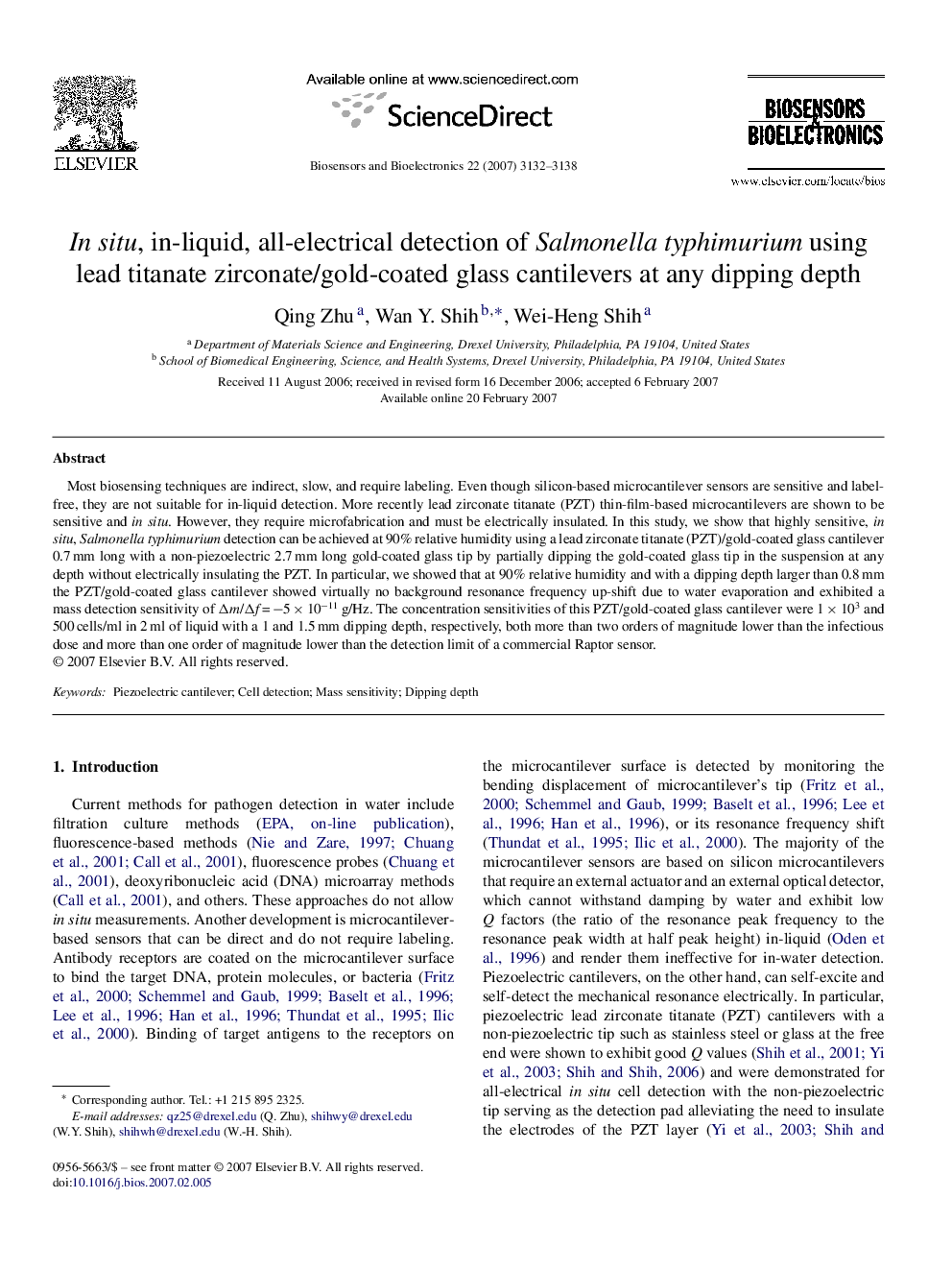| Article ID | Journal | Published Year | Pages | File Type |
|---|---|---|---|---|
| 869444 | Biosensors and Bioelectronics | 2007 | 7 Pages |
Most biosensing techniques are indirect, slow, and require labeling. Even though silicon-based microcantilever sensors are sensitive and label-free, they are not suitable for in-liquid detection. More recently lead zirconate titanate (PZT) thin-film-based microcantilevers are shown to be sensitive and in situ. However, they require microfabrication and must be electrically insulated. In this study, we show that highly sensitive, in situ, Salmonella typhimurium detection can be achieved at 90% relative humidity using a lead zirconate titanate (PZT)/gold-coated glass cantilever 0.7 mm long with a non-piezoelectric 2.7 mm long gold-coated glass tip by partially dipping the gold-coated glass tip in the suspension at any depth without electrically insulating the PZT. In particular, we showed that at 90% relative humidity and with a dipping depth larger than 0.8 mm the PZT/gold-coated glass cantilever showed virtually no background resonance frequency up-shift due to water evaporation and exhibited a mass detection sensitivity of Δm/Δf = −5 × 10−11 g/Hz. The concentration sensitivities of this PZT/gold-coated glass cantilever were 1 × 103 and 500 cells/ml in 2 ml of liquid with a 1 and 1.5 mm dipping depth, respectively, both more than two orders of magnitude lower than the infectious dose and more than one order of magnitude lower than the detection limit of a commercial Raptor sensor.
